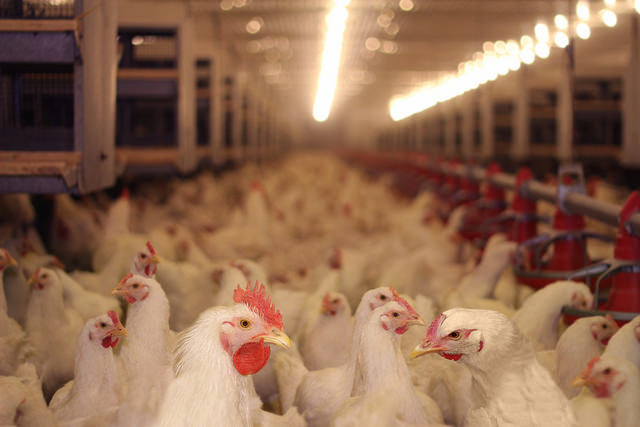



Broiler Growth Traits Can Still Improve Further
While it took 84 days to produce a 1.8 kg broiler from 3.25 kg of feed back in the 1950s, there are broilers today that achieve this body weight after just 28 days from 1.4 kg of feed. Dr Ron Meijerhof talked about the prospects for further improvements in these traits with Glenneis Kriel.With average modern broilers achieving feed conversion ratios of close to one on one, the question arises whether we have reached the limit in these traits.
Whether it is physically possible and sustainable to produce “more bird” with fewer input. Dr Ron Meijerhof, managing director of Poultry Performance Plus, believes so, providing the right criteria is used to measure performance.

“When it comes to energy or protein conversion rate, it will not be possible to get much more out of a bird than what we put in. As we will always need energy and protein for maintenance, some of the inputs will be ‘wasted’, but comparing kilogram of feed with kilogram of body weight is two different things,” Dr Miejerhof said.
He explained that feed conversion ratio, which refers to the amount of feed used to produce a certain amount of meat, was the wrong criteria on which to base such a judgements, as it did not take into account differences in the content of feed versus the meat. Fish, for example, is already showing that it is possible to get more kilogram of fish harvest than the kilogram of feed that you put into it, simply because a large part of the fish is made up of water.
Even so, Dr Meijerhof, is pretty sure that we haven’t yet reached the limit of growth improvements:
“The question is where the limits are: At a feed conversion ratio of one to one or lower; or an average daily growth rate of 100 g per day. I don’t think so, but the future will tell.”
What does the future hold?
Dr Meijerhof feels that broiler traits will remain more important than breeding traits for now, simply because that is where the money is.
“If we calculate how much the day old chick price contributes to the total cost price of a kilogram of meat, we have to conclude that only a relatively small fraction of the cost price is made up by the day old chick price, in other words breeder performance.
"That means that a ten per cent improvement in the cost price of a day old chick will have much less influence on the cost price of meat, than a ten per cent improvement in the cost price of the broiler growing,” Dr Meijerhof explained.
There is also still a lot of variation in the production performance of different lines, which meant that there still was room for growth improvements in specific lines.
“Although birds and lines are for the main part equal, there are still relatively small differences that make certain lines more suitable for certain markets. If we look into more alternative products, especially for the organic or slow growing markets, the difference are actually quite high,” Dr Meijerhof said.
The focus, as in the past, will not only be on faster growth, but also on all the other aspects of the birds to keep them in balance. Geneticists will therefore at the same time, still select for traits such as stronger bones, less body lipid, greater resistance to environmental stresses and diseases and other important traits.
Broiler traits will also remain important, in spite of their low contribution to the cost of the final product. Dr Meijerhof explained that it was very costly for an integration not to have the production of day old chicks as expected, as it would result in the processing line being partly empty.
Since there is a general negative influence of selection on broiler traits on breeder performance, geneticists have to overcome that negative correlation by selecting in a balanced way with attention to all the traits at the same time. Something geneticists have been managed to do very well up until now, according to Dr Meijerhof.
“This is easy to see in the field, as broiler performance has never been as high as nowadays, but at the same time egg production and hatchability are also higher than for instance fifteen years ago. If geneticists were unable to overcome that negative correlation, we would have seen a steady decrease in breeder performance, but we do not,” Dr Meijerhof said.








